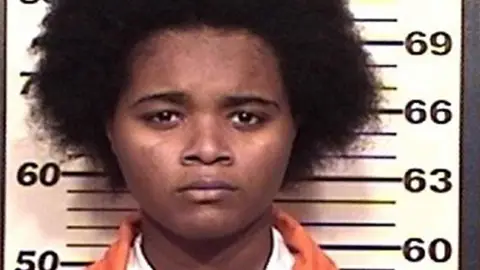Transgender Inmate Was Beaten And Raped After Being Denied Request For Safer Housing

A transgender inmate says she was raped and beaten just hours after having a request for safe housing denied by a federal judge.
Lindsay Saunders-Velez was placed in a disciplinary pod at Colorado Territorial Correctional Facility in Cañon City alongside four men who had all previously either propositioned her for sex or threatened to rape her.
She was ordered there after correctional officers allegedly saw her kissing a male inmate, which she denies. In the April 20 ruling denying Saunders-Velez's request, Chief U.S. District Judge Marcia Krieger said she had not proven herself to be at risk of a sexual assault.
“They threw a 20-year-old kid in the shark tank knowing what would happen. This is outrageous,” Paula Griesen, Saunders-Velez's attorney told The Denver Post. “She looks like a woman and has female attributes, including breasts.”
Griesen said just a few hours after being denied the request, another inmate entered Saunders-Velez's cell and demanded sex. When her client refused, Grisen said the inmate slammed Saunders-Velez's head against a metal bunk bed frame and then brutally raped her.
She was hospitalized for her injuries, including rectal tearing, and was returned to prison the following day.
Saunders-Velez was abandoned by her parents after identifying as female from a young age, and started going to youth detention beginning at just 8-year-old, and has spent her life in and out of detention centers and prisons, often as a result of fighting off people who sexually abused her, Griesen said.
In July, Saunders-Velez, then representing herself, sued Colorado Department of Corrections, objecting to being searched by male staff members, and alleging that prison staff referred to her as a man and refused to let her have female undergarments or makeup.
The department's policy permits female transgender inmates to receive sports bras and instructs staff that intentional misuse of gender pronouns is prohibited.
Federal law requires housing in prisons for transgender people to be determined based on a case-by-case decision, not solely by genitalia or gender assigned at birth, as a result of 2003's Prison Rape Elimination Act.
Still, almost all correctional facilities house transgender inmates based on genitalia or the gender assigned at birth, said Demoya Gordon, an attorney with Lamba Legal’s Transgender Rights Project.
There have been reports the Trump administration is considering rolling back Obama-era protections for transgender inmates clarifying the rights of transgender offenders in housing, strip searches and medical care, saying identities of trans inmates should be respected and that, on a case-by-case basis, they could be moved to prisons matching their gender identity.
As a result, transgender inmates are at a greater risk for sexual assault while behind bars.
And nearly one in six transgender Americans—and one in two black transgender people—has been to prison, the group reports.
"This issue is not going to go away,” Griesen said. “We’re going to fight it until these individuals are treated with the respect they deserve."





